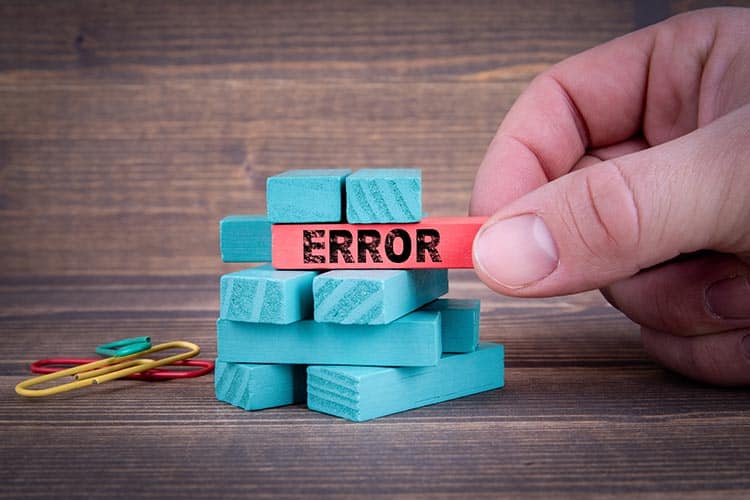-
Are Duplicate and Erroneous Payments Costing Your Company?
Are Duplicate and Erroneous Payments Costing Your Company? Here’s How Automation Can Help
Don’t you hate it when you find out you overpaid for something or catch a wrong charge on your credit card statement?
As irritating as that can be when it happens in your personal life, duplicate or erroneous payments can be even worse when they occur in the finance department of your company. This sort of mistake can disrupt cash flow by making it so a company has less money available than planned. It can also be costly and time-consuming to try and fix payments that went to the wrong vendor, payments in the wrong amount, or duplicate payments.
While duplicate or erroneous payments might make up only a small fraction of total payments, they can have a big impact on a company. Finance and accounts payable departments need a way to monitor these types of payments and try to prevent them. Automation is a big help with this.

Are Erroneous Payments A Big Problem?
APQC’s Open Standards Benchmarking® survey data revealed that 1.5% is the median percentage of payments going through the AP department that are duplicate or erroneous. Even companies designated “top performers” still have 0.8% of payments that are in error. That might not seem like a huge number, but the amount of money involved can still be in the range of thousands of dollars. APQC’s data details the percentage of total payments that are in error, not the amount of money involved.
Duplicate or erroneous payments impact cash flow and resolving them eats up time that could be better spent elsewhere. Often, resolving these errors involves working with the vendors to which your company made the inaccurate or duplicate payment. Unless the vendor is unusually attentive, they probably won’t catch and resolve the problem on their own initiative. Even assuming the problems are all eventually resolved, duplicate and erroneous payments tie up cash for days or even weeks. They can also be costly to resolve in terms of workhours, as employees must receive payment for the hours they spend trying to fix payment problems.
Why Do Erroneous Payments Happen?
According to CFO’s article “Metric of the Month: Detect and Prevent Duplicate or Erroneous Payments,” the most common reasons for duplicate and erroneous payments are “data-entry errors, poor-quality data in the master vendor file (MVF), and pricing errors.” These are all issues that your company can mitigate using automation to help maintain data accuracy.
Sometimes, duplicate and erroneous payments happen because of invoices submitted multiple times or errors on the invoices. APQC data shows that the median time it takes to resolve invoice errors is four days. The “least efficient” companies take about six days to resolve errors, and the most efficient ones take three days. Resolution involves cross-referencing invoices, purchase orders, and any other associated documents to determine what’s wrong.

How Does Automation Improve AP Data?
Automation software takes over many of the repetitive, detail-oriented tasks involved in accounts payable. It streamlines and standardizes AP processes while ensuring high levels of data accuracy to resolve the most common causes of erroneous payments.
Data Entry
Automating and digitizing data entry dramatically reduces the risk of errors. NextProcess uses a combination of optical character recognition (OCR), data indexing, and keying review to ensure over 99% accuracy on every invoice. Even the most contentious employee is prone to human error, and cannot guarantee that level of accuracy in data entry.
Pricing Errors
Accurate data entry and digital data indexing make it easy to find specific information in files. The AP automation system can use this digital data to match invoices to purchase orders and determine if there are any discrepancies such as pricing errors. The software also cross-references data to check for duplicate invoices. It will alert an employee if it detects anything out of the ordinary.
Master Vendor File
The MVF can be a main source for erroneous and duplicate payments if it contains errors. Inaccurate, duplicate, and outdated vendor information can lead to duplicate payments or payments made in error. A quarterly review of the MVF is a best practice that can help reduce erroneous payments.
Good AP automation software will include vendor management tools to make this process easy, and to automatically detect common issues like duplicate entries for the same vendor. NextProcess’s AP software also includes a vendor portal that allows your vendors to log in and update their own information, submit invoices, and resolve invoice errors.
Can Automation Help Enforce Best Practices?
Another key aspect of preventing duplicate and erroneous payments is to establish standard practices for handling invoices. Even without automation, standard practices detailing how to handle invoices can reduce duplicate and erroneous payments. A lot of errors happen because people just do things their own way and miss important steps. Standardizing the process helps ensure that the invoices get paid correctly.
One of the great things about process automation software like we offer here at NextProcess is that you can customize it to match your organization’s needs. You’ll get to set up the software to automatically enforce your company’s standard practices. The software also streamlines the entire invoice-to-payment process, making sure things flow smoothly. This saves your company money by ensuring you don’t have late-payment fees or duplicate payments, and by reducing the number of erroneous payments.
Internal controls protect against fraud as well as reduce duplicate and erroneous payments. You can set up controls right in the AP automation software. For example, you can customize the software to auto-process and pay invoices that match POs and are under a certain amount, but require approval for invoices that fall outside those parameters. Another way to strengthen internal controls is by segregating accounts payable duties. Outsourcing payment disbursement to a trusted third party can increase security and make flexible payment options easier to manage.
To learn more about accounts payable automation software, payment disbursement outsourcing, or our suite of integrated procure-to-pay software solutions, contact NextProcess today. We can set up a software demo so you can see our AP automation in action, and answer your questions about how our software can help stop duplicate and erroneous payments.